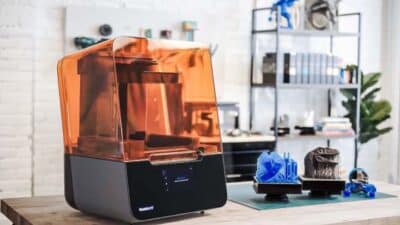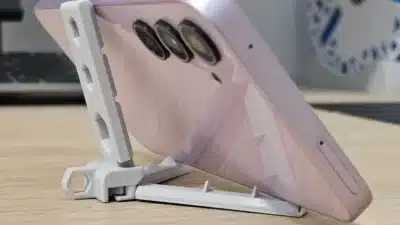3D printed jewelry represents a revolutionary approach to creating personalized accessories that combines cutting-edge technology with artistic expression. This innovative method allows you to design and produce custom rings, necklaces, bracelets, and earrings with intricate details that would be impossible to achieve through traditional manufacturing techniques.
3D printing technology enables you to create unique jewelry pieces at a fraction of the cost of traditional methods while maintaining professional quality and precision. Whether you’re a hobbyist looking to craft personal accessories or an entrepreneur interested in starting a jewelry business, 3D printing opens up endless possibilities for creativity and customization.
The process involves designing digital models, preparing them for printing, and then bringing your creations to life using specialized 3D printers and materials. You’ll discover how to transform your creative vision into tangible jewelry pieces that reflect your personal style or meet specific customer demands.
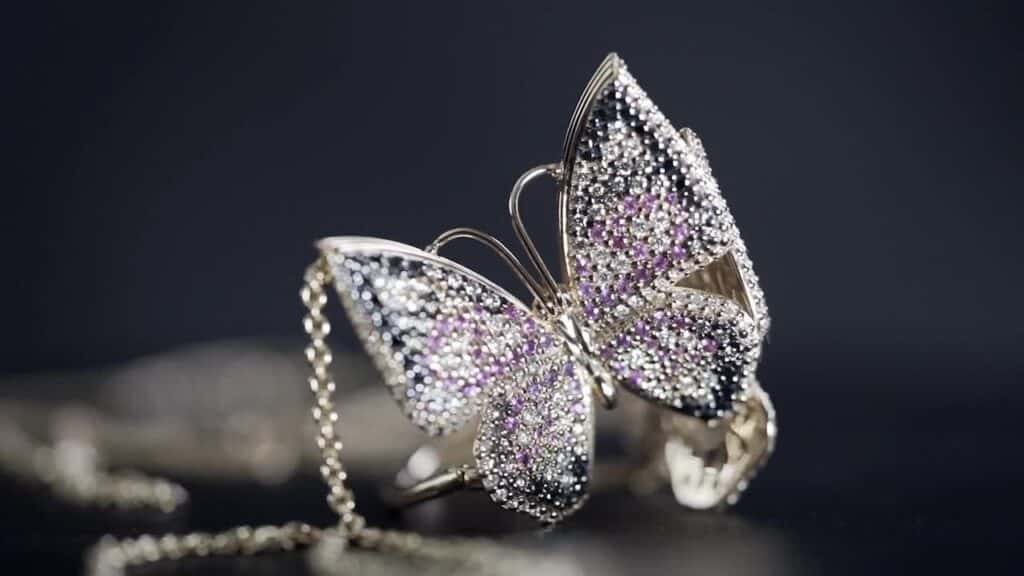
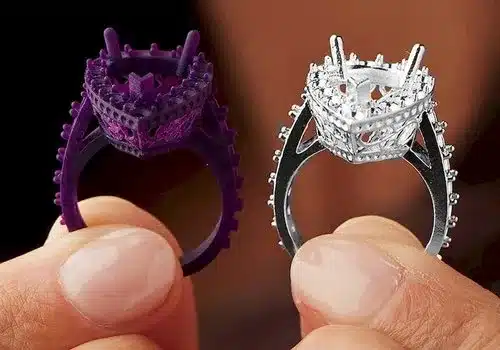
Key Takeaways
- 3D printing allows you to create custom jewelry designs with intricate details at lower costs than traditional methods
- The process involves digital design, printer preparation, and post-processing techniques to achieve professional results
- You can monetize your 3D printed jewelry creations through various online platforms and marketplaces
What Is 3D Printed Jewelry?
3D printed jewelry represents a modern approach to creating accessories using additive manufacturing technology. This innovative method transforms digital designs into physical pieces through layer-by-layer material deposition.
How 3D Printing Is Revolutionizing Jewelry
3D printing has fundamentally changed how jewelry designers approach their craft. You can now create intricate designs that would be impossible or extremely difficult to achieve through traditional casting methods.
The technology allows you to produce complex geometries, hollow structures, and interlocking components in a single print. This capability opens up entirely new design possibilities that were previously unimaginable.
Design flexibility is perhaps the most significant advantage. You can modify designs instantly in digital format before committing to physical production. This means fewer prototypes and faster iteration cycles.
The manufacturing process itself has been streamlined. Traditional jewelry making requires multiple steps including wax carving, mold creation, and casting. 3D printing eliminates many of these intermediate steps.
You can also produce small batches economically. Traditional manufacturing often requires large minimum orders to be cost-effective, but 3D printing makes single pieces viable.
Types of 3D Printed Jewelry
Several categories of 3D printed jewelry exist, each serving different purposes and markets. Direct printing creates finished pieces using materials like precious metal powders or specialized resins.
Prototype printing involves creating models in plastic or resin for testing fit and design before final production. These prototypes help you visualize the final piece and make necessary adjustments.
Investment casting models represent another common application. You print in castable materials that burn out cleanly during the casting process, leaving perfect molds for metal jewelry.
Popular jewelry types include:
- Rings with complex internal structures
- Pendants featuring intricate lattice work
- Earrings with moving parts
- Bracelets with interconnected links
Benefits of 3D Printed Jewelry Designs
Customization stands as the primary benefit of 3D printed jewelry. You can easily adjust ring sizes, modify design elements, or create completely personalized pieces for individual customers.
Cost efficiency improves significantly for complex designs. Traditional methods might require expensive tooling or extensive hand labor, while 3D printing handles complexity without additional costs.
Speed to market accelerates dramatically. You can go from concept to finished piece in days rather than weeks or months required by conventional manufacturing.
Material waste reduces substantially since 3D printing uses only the material needed for the actual piece. Traditional subtractive manufacturing often wastes significant amounts of precious materials.
Quality consistency becomes more achievable. Once you perfect a digital design, every printed piece will match exactly, eliminating human error variations common in handcrafted jewelry.

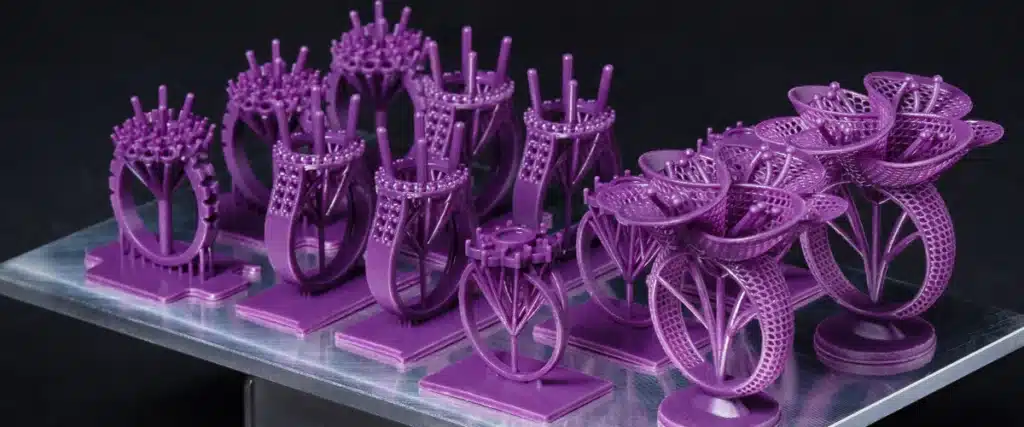
Designing 3D Printed Jewelry
Creating 3D printed jewelry involves exploring diverse design styles, developing custom pieces tailored to individual preferences, and mastering specialized software tools that transform digital concepts into printable STL files.
Popular Design Styles and Inspiration
Geometric patterns dominate modern 3D printed jewelry design. Angular rings, hexagonal earrings, and lattice-structured pendants showcase the precision possible with digital fabrication.
Nature-inspired elements translate beautifully into 3D designs. Leaf textures, flower petals, and organic flowing forms create elegant pieces that traditional manufacturing struggles to replicate.
Art Deco influences appear frequently in contemporary designs. Bold lines, symmetrical patterns, and stepped forms suit the layer-by-layer printing process perfectly.
Minimalist aesthetics work exceptionally well for beginners. Simple band rings, clean pendant shapes, and understated stud earrings require less complex modeling skills.
Vintage reproductions benefit from 3D printing’s detail capabilities. Intricate filigree work, Victorian-era brooches, and antique-style cameos become accessible through digital recreation.
Personalized text jewelry offers unique customization options. Names, dates, or meaningful phrases integrate seamlessly into ring bands, pendant surfaces, or bracelet links.
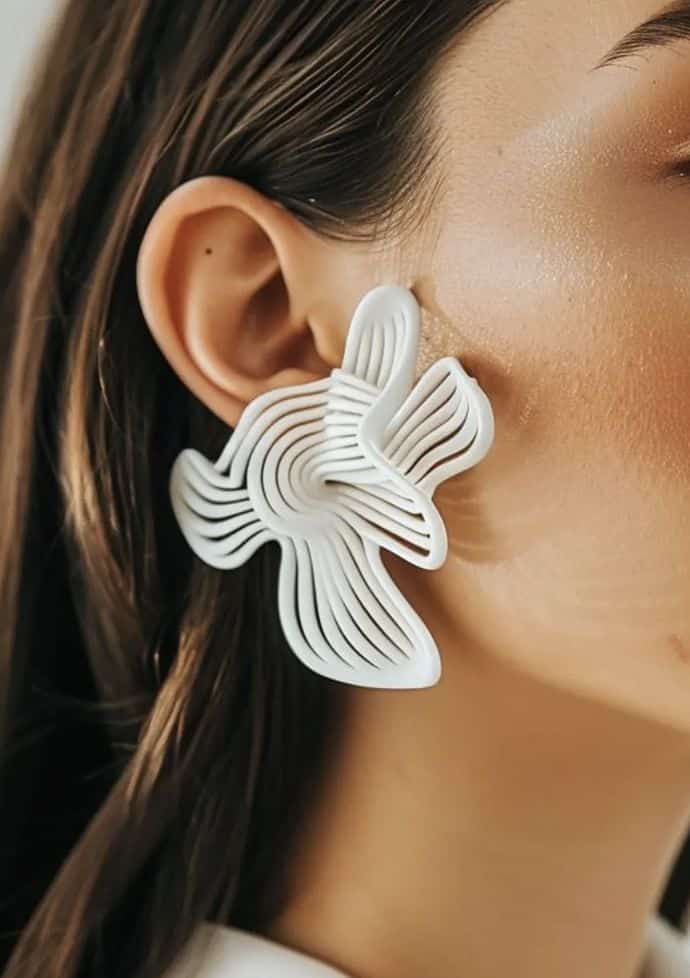
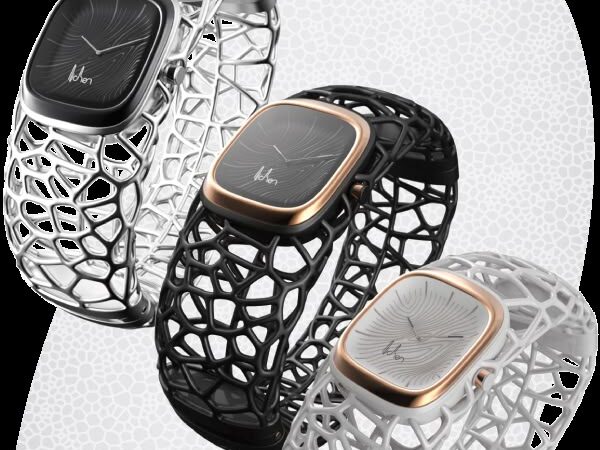
Custom Jewelry Creations
Sizing flexibility represents a major advantage of custom 3D jewelry design. You can adjust ring diameters, bracelet lengths, and earring proportions without recreating entire models.
Material considerations influence your design choices significantly. Different filaments require specific wall thicknesses, support structures, and finishing techniques for optimal results.
Functional elements add value to custom pieces. Hidden compartments, interlocking components, or modular designs showcase 3D printing’s unique capabilities.
Personal measurements ensure perfect fit for custom pieces. Accurate finger sizes, wrist circumferences, and ear anatomy data prevent costly reprints and adjustments.
Prototype testing helps refine designs before final production. Print draft versions in inexpensive materials to test comfort, durability, and visual appeal.
File preparation requires attention to detail. Your STL files must have proper mesh topology, closed surfaces, and appropriate resolution for successful printing.
Tools and Software for Jewelry Modeling
Blender offers powerful free modeling capabilities for jewelry design. Its sculpting tools excel at creating organic shapes and detailed surface textures.
Fusion 360 provides parametric modeling ideal for geometric jewelry. You can easily modify dimensions, create precise measurements, and generate clean STL files.
Rhino 3D specializes in jewelry design workflows. Its NURBS modeling approach produces smooth curves and surfaces perfect for rings and pendants.
Tinkercad serves beginners well with its browser-based interface. Simple drag-and-drop tools let you create basic jewelry designs without software installation.
AI-powered design tools are emerging to assist with pattern generation and form optimization. These tools can suggest design variations and automate repetitive modeling tasks.
STL file quality determines print success. Export settings should balance file size with surface smoothness, typically using 0.1mm tolerance for jewelry applications.
Design validation software checks your STL files for printability issues before sending to the printer.
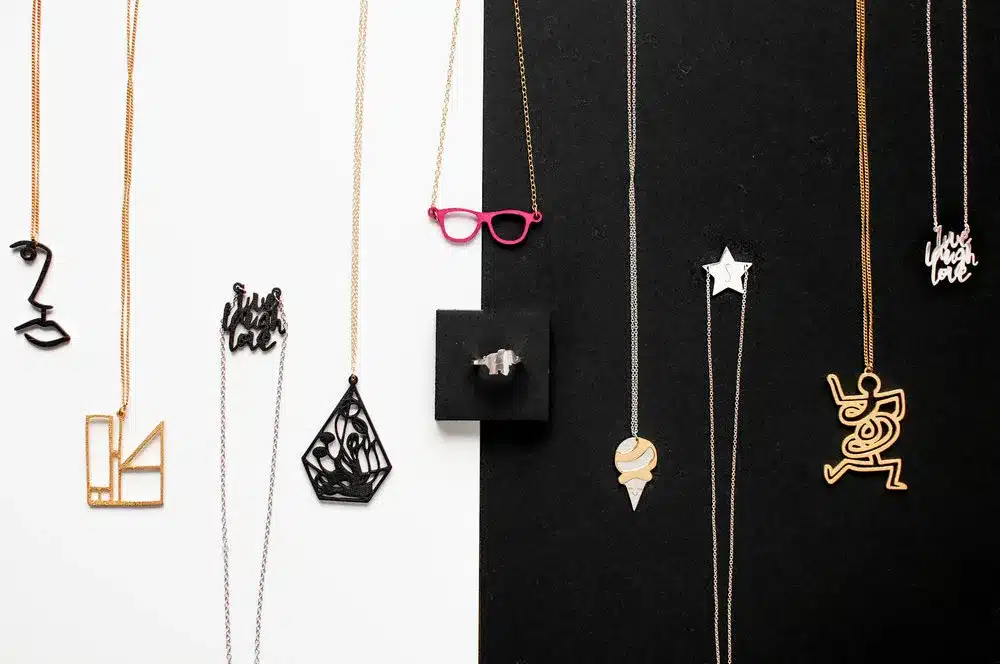

Preparing and Printing Jewelry Designs
Successfully creating 3D printed jewelry requires careful attention to file preparation, equipment selection, and material choices. Each step directly impacts the quality and durability of your final pieces.
Exporting and Handling STL Files
Your jewelry design needs to be converted into an STL file format before printing. STL files contain the mesh data that your 3d printer reads to create physical objects.
When exporting your design, set the resolution to high quality. This ensures smooth curves and fine details in your jewelry pieces. Most CAD software allows you to adjust the tessellation settings during export.
Check your STL file before printing:
- Verify the file has no holes or gaps in the mesh
- Ensure the scale is correct for your intended jewelry size
- Confirm wall thickness meets minimum requirements for your chosen material
Use mesh repair software if you discover issues. Programs like Meshmixer or Netfabb can fix common STL problems automatically.
Save your STL files in a organized folder system. Name them clearly with design details and version numbers for easy identification later.

Choosing the Right 3D Printer
Different 3d printer technologies work better for jewelry applications. Resin printers offer the highest detail resolution needed for intricate jewelry designs.
SLA (Stereolithography) printers provide smooth surface finishes and can capture fine details as small as 0.1mm. These work well for rings, pendants, and detailed ornamental pieces.
DLP (Digital Light Processing) printers cure entire layers at once, making them faster for batch production. They maintain similar quality to SLA printers.
FDM printers can work for larger, simpler jewelry pieces but lack the resolution for delicate details. They’re better suited for prototyping rather than final products.
Consider your budget and production volume. Entry-level resin printers start around $200, while professional jewelry printers cost several thousand dollars.
Material Selection for Jewelry
Your material choice affects durability, appearance, and post-processing requirements. Each material has specific properties suited for different jewelry applications.
Jewelry resins are specially formulated for detailed work. They cure to a hard, smooth finish and accept paint and metallic coatings well.
Wax-like materials work perfectly for lost-wax casting. You can print your design, then cast it in precious metals using traditional jewelry techniques.
Flexible resins suit items like bracelets or earrings that need some give. They resist breaking under normal wear conditions.
Standard resins cost less but may yellow over time or feel brittle. Premium jewelry resins maintain color stability and offer better mechanical properties.
Consider skin sensitivity when selecting materials. Some resins may cause reactions, so choose biocompatible options for items that contact skin directly.
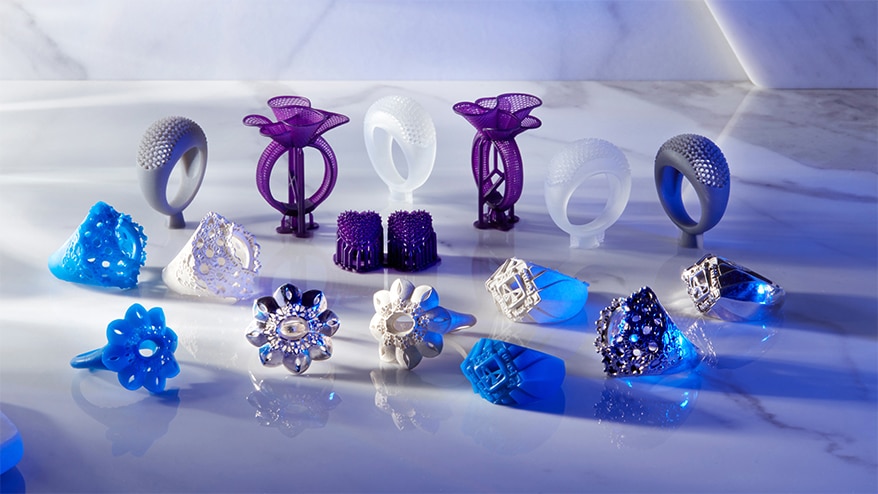

Finishing and Enhancing 3D Printed Jewelry
Raw 3D printed jewelry requires careful cleaning and post-processing to achieve professional results. Various coloring, plating, and finishing techniques can transform basic prints into stunning pieces that rival traditional jewelry methods.
Cleaning and Post-Processing
Remove all support material carefully using flush cutters or pliers. Start with larger supports before moving to smaller details.
Sanding Process:
- Begin with 220-grit sandpaper for rough areas
- Progress to 400-grit for smoothing
- Finish with 800-grit for fine details
Clean your jewelry thoroughly with isopropyl alcohol to remove oils and debris. For resin prints, use an ultrasonic cleaner with warm soapy water for 5-10 minutes.
File sharp edges and smooth connection points where supports were attached. Use small needle files for intricate areas and curves.
Surface Preparation Steps:
- Remove layer lines with fine sandpaper
- Fill gaps with appropriate filler material
- Sand filled areas smooth
- Clean with compressed air
Polish metal prints using progressive grits of polishing compound. Start with coarse compound and finish with fine polishing paste for mirror-like surfaces.
Coloring, Plating, and Finishing Techniques
Apply primer specifically designed for 3D printed materials before painting. This ensures proper paint adhesion and prevents chipping.
Popular Finishing Options:
- Electroplating: Gold, silver, or copper plating
- Spray painting: Metallic or colored finishes
- Patina solutions: Antique and weathered effects
- Clear coating: UV-resistant protective layers
Electroplating creates authentic metal surfaces on plastic prints. Clean the surface thoroughly and apply conductive paint before plating.
Use automotive-grade paints for durability and color retention. Apply thin, even coats with 15-20 minutes drying time between applications.
Plating Process:
- Clean and degrease the surface
- Apply conductive coating
- Immerse in plating solution
- Control current and timing precisely
Buffing wheels with polishing compound create high-gloss finishes on metal prints. Use progressively finer compounds for best results.
Apply protective clear coats to prevent tarnishing and wear. Choose UV-resistant formulations for jewelry exposed to sunlight.
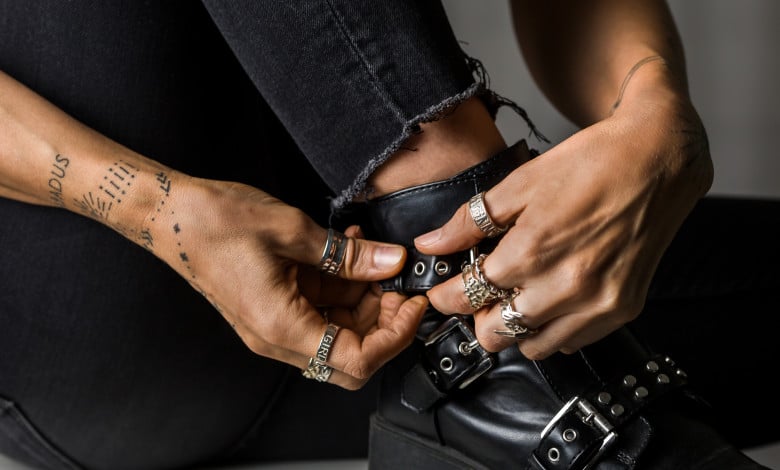

Sharing and Selling 3D Printed Jewelry Designs
Multiple online platforms allow jewelry designers to share their 3D printed jewelry designs with global audiences or generate income from their creations. Understanding copyright laws and ownership rights protects both designers and buyers in the digital marketplace.
Platforms for Sharing and Selling
Free sharing platforms like Thingiverse, Printables, and Cults3D let you showcase your STL files to maker communities. These sites focus on open-source sharing where users can download and print your designs.
Cults3D offers both free and paid options for your jewelry designs. You can build a following while earning money from premium designs.
Professional marketplaces provide more robust selling features. Zazzy.co allows you to create your own jewelry brand and sell directly to customers. The platform handles the technical aspects while you focus on design.
Glaciera’s marketplace specializes in jewelry designs, offering STL and 3DM formats plus rendering services. This platform targets professional jewelers and businesses.
Direct-to-consumer platforms like Jweel.com handle the entire process from design to manufacturing. You create custom pieces, and they handle 3D printing and fulfillment in materials like metal and resin.
Consider your goals when choosing platforms. Free sites build community engagement, while paid platforms generate revenue from your 3D printed jewelry designs.
Legal Considerations and Copyright
You automatically own copyright to original jewelry designs you create. This includes the digital STL files and the physical design elements. Register your most valuable designs for stronger legal protection.
Licensing terms vary significantly between platforms. Some require you to release designs under Creative Commons licenses, allowing others to modify your work. Read platform agreements carefully before uploading.
Derivative works present complex legal issues. Avoid copying existing copyrighted jewelry designs, even if you modify them. Create original designs or use royalty-free base models.
Commercial licensing becomes important when selling designs. Specify whether buyers can resell printed items or only use them personally. Clear licensing prevents disputes and protects your intellectual property.
Keep detailed records of your design process, including sketches and development files. This documentation proves originality if copyright disputes arise with your 3D printed jewelry creations.
- 0shares
- Facebook0
- Pinterest0
- Twitter0

